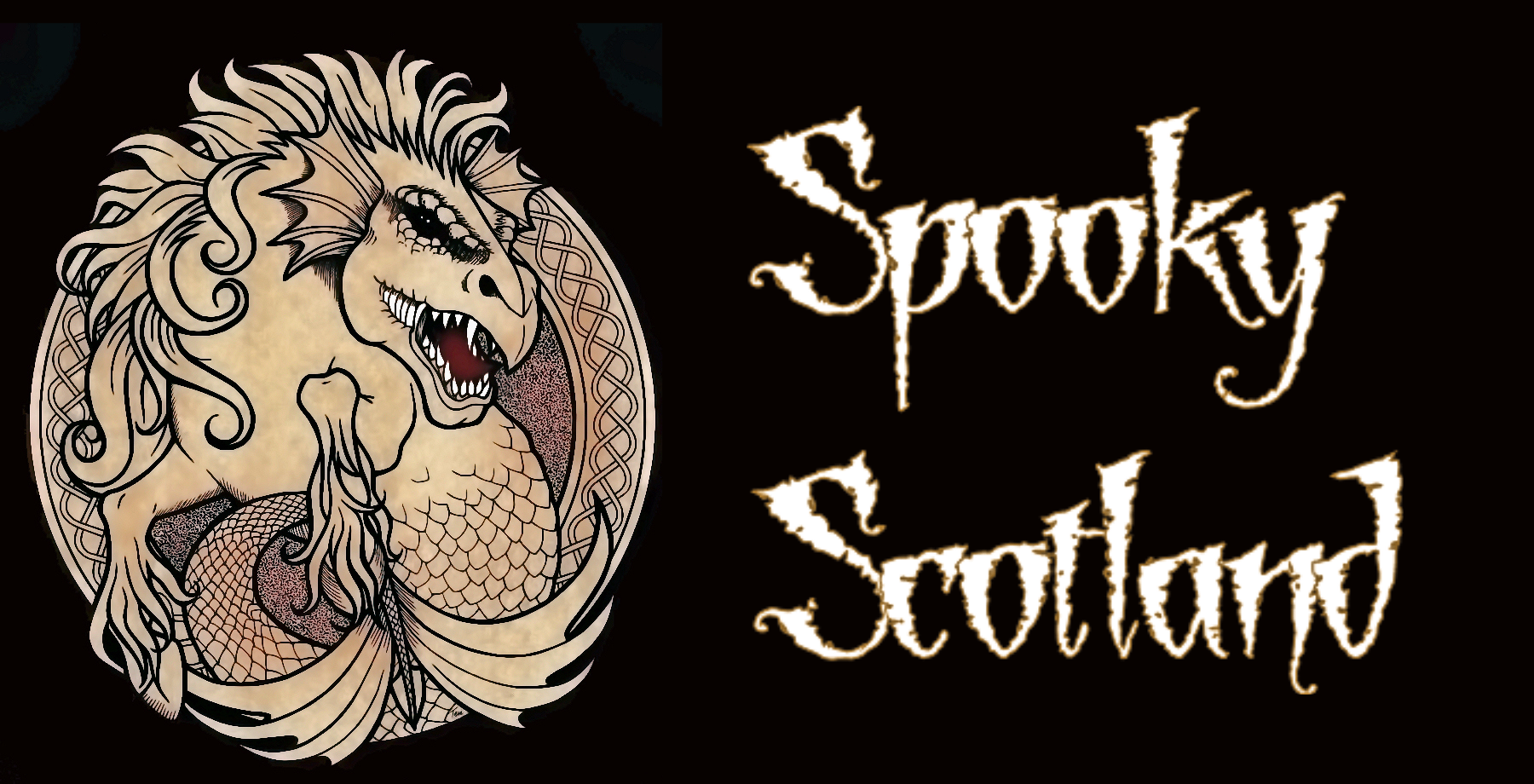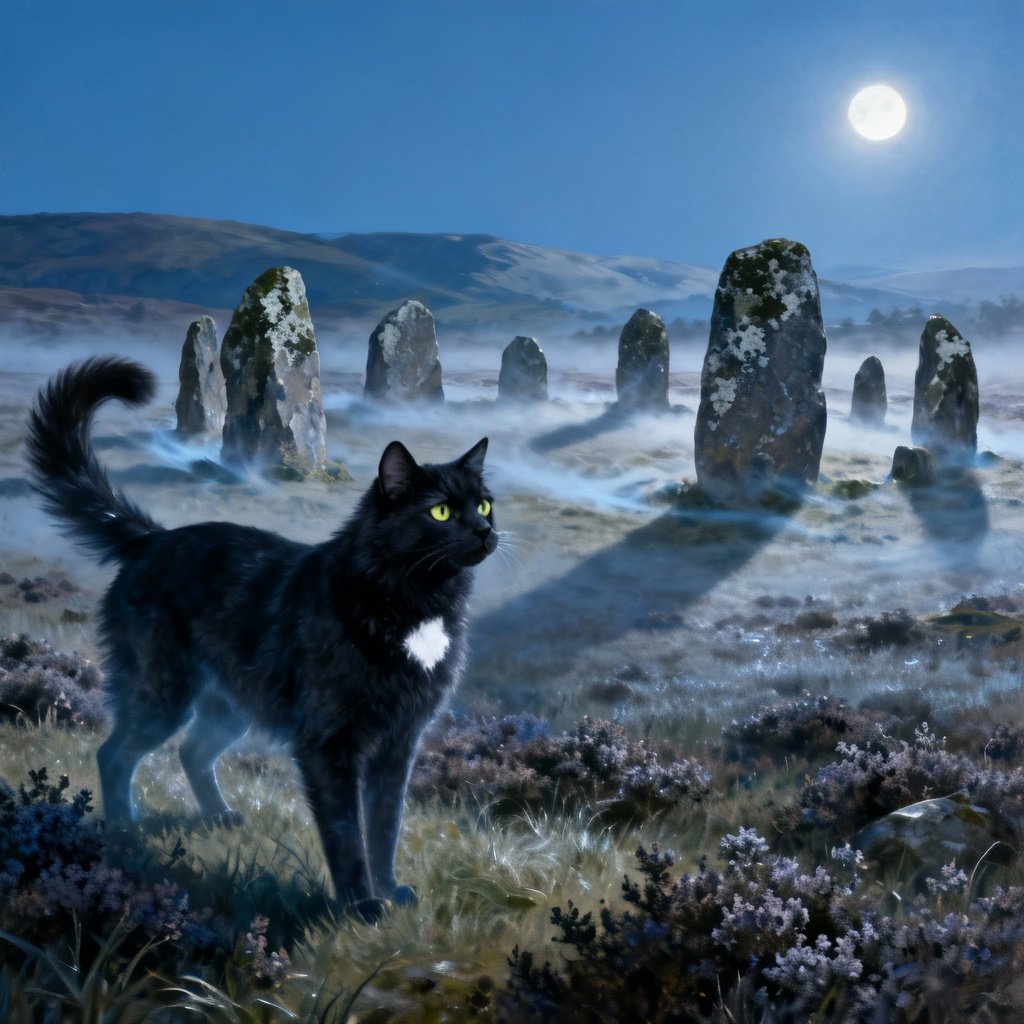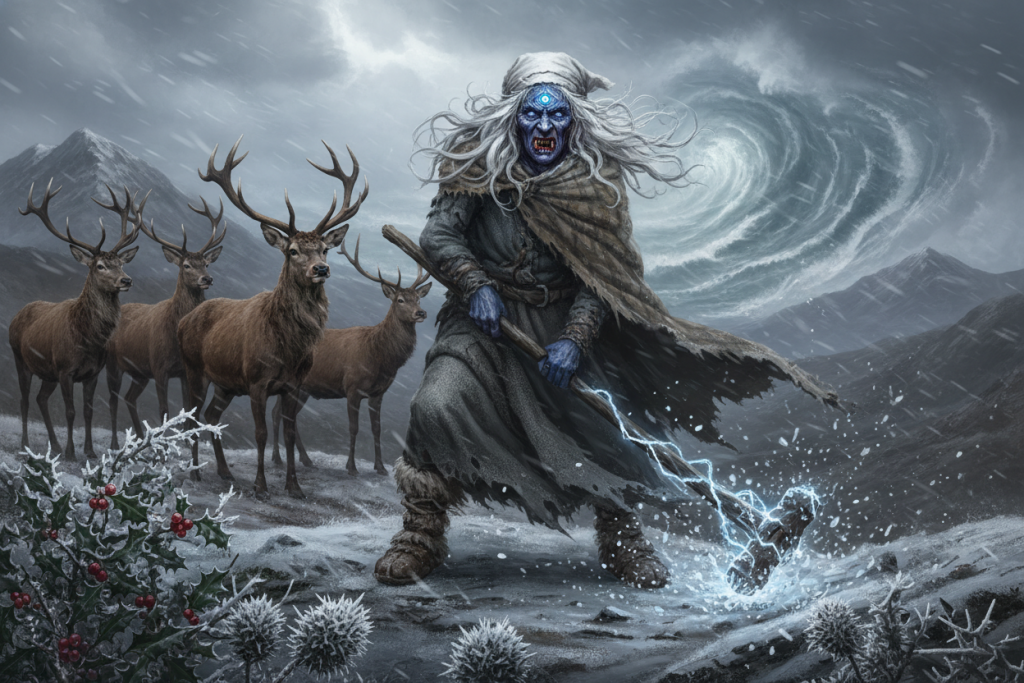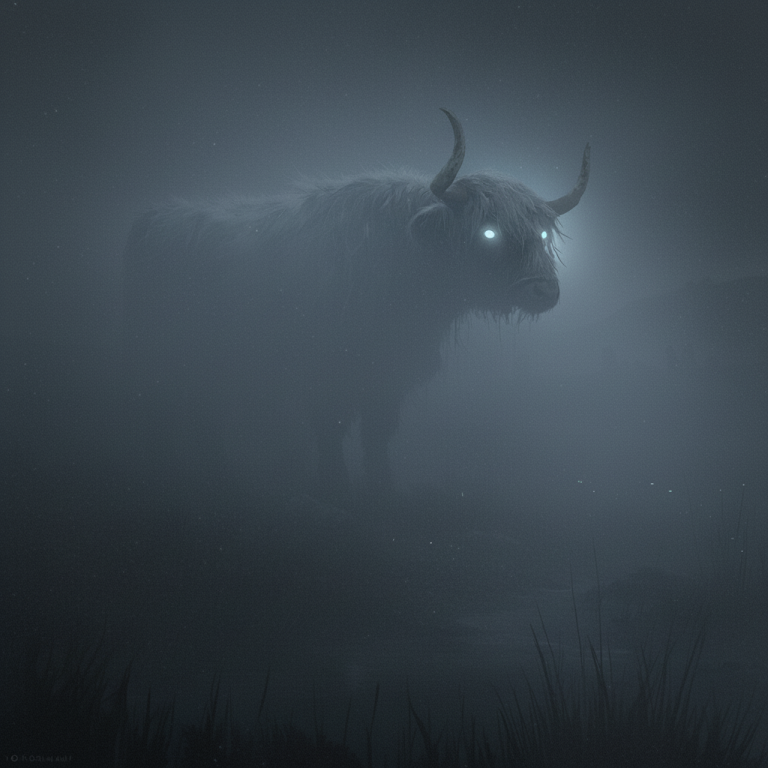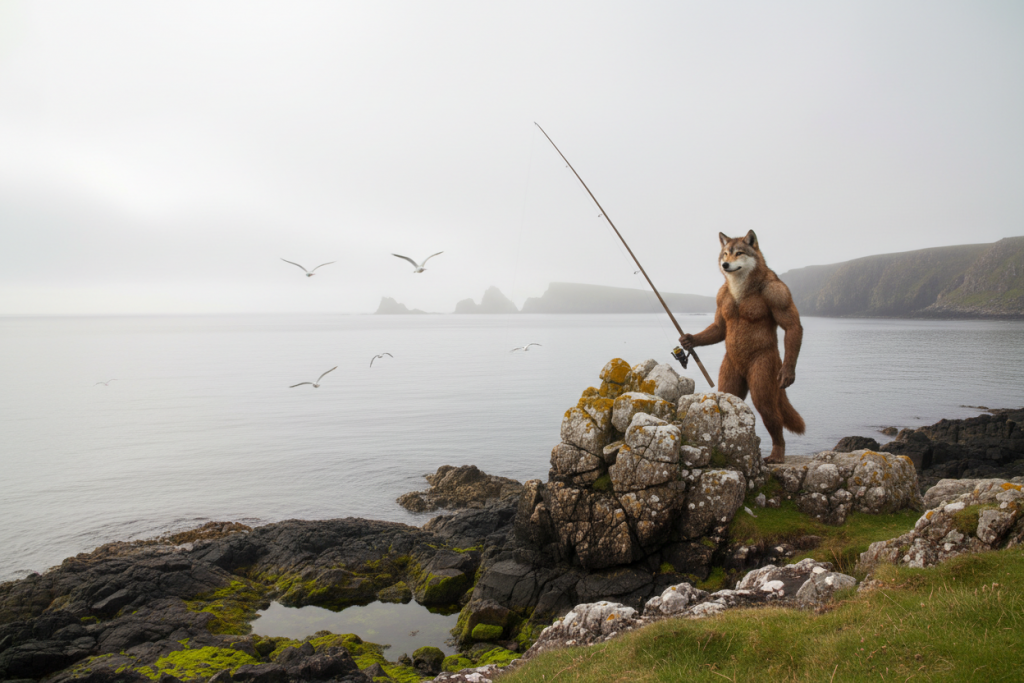Name pronunciation:
Scottish Gaelic: “khaht shee”
General Information:
The Cat-Sìth is a legendary creature from Scottish and Irish folklore. Most accounts describe it as a fairy-like being that looks like a very large black cat with a white spot on its chest. However, some traditions say it is actually a witch in disguise who can transform into a cat nine times. People believed the Cat-Sìth haunted the Scottish Highlands and sometimes prowled near wakes and burial places. Today, many think the legends were influenced by real animals, especially the Kellas cat, a rare hybrid of Scottish wildcat and domestic cat.
For readers of Scottish lore, the Cat-Sìth sits alongside other Highland tales and Halloween customs. It links to ideas about black cats, the “nine lives” saying, and the festival of Samhain.
Appearance:
Most sources agree: the Cat-Sìth is jet black except for a single white patch on its chest. It is said to be as large as a medium dog. It often appears with its back arched and its fur standing on end to look bigger. When it thinks no one is watching, it walks on its hind legs, which is how many people in the stories claim to have “caught it out.”
Habitat:
Tradition places the Cat-Sìth in the Scottish Highlands. People imagined it roaming moorland, glens, and villages, especially near places where a death had occurred. The association with the Kellas cat further ties it to northern and north‑eastern Scotland.
Behaviour:
According to folklore, the Cat-Sìth is wary around humans and tries to appear dominant. Crucially, people feared it could steal a person’s soul by passing over a corpse before burial. Because of this belief, families and neighbours held “Late Wakes” to guard the body. They kept watch, played music, told riddles, and even wrestled to keep cats away. They also avoided lighting fires near the body, as warmth might attract the Cat-Sìth. Around Samhain, households left a saucer of milk outside. If they remembered, the Cat-Sìth would bless them; if they forgot, their cows’ milk might dry up for the year.
Shape-shifting Ability:
Many stories claim the Cat-Sìth is not a fairy at all but a witch who can turn into a cat and back again nine times. After the ninth transformation, the witch would be trapped in cat form forever. This idea may have helped shape the modern belief that cats have “nine lives.”
Variant:
Some traditions mention a demonic Cat-Sìth known as “Big Ears”- King of the Cat-Sìth. Folklore says he could be summoned by a dark ritual called taghairm. In grim versions, participants burned the bodies of cats for four days and nights to call Big Ears and ask for a wish. This is a cautionary tale more than a guide, and it underlines how fearful people were of the creature’s power.
Location in Scotland:
- Highlands in general, including remote glens and crofting communities
- North and north‑east regions where Kellas cats have been recorded
- Folklore echoes also appear in Irish sources, though stories are most common in Scotland
Stories/ Sightings or Experiences:
The King of the Cats
A classic folktale tells of a man walking home on a winter night. He sees a strange procession: nine black cats, each with a white spot on its chest, carrying a tiny coffin with a crown. As they pass, one cat turns and says, “Tell Tom Tildrum that Tim Toldrum is dead.” The man rushes home and tells his wife. Their cat, Old Tom, leaps up and cries, “What?! Old Tim dead! Then I’m the King o’ the Cats!” Old Tom shoots up the chimney and is never seen again. People often link this tale to Cat-Sìth lore because of the number of cats, the white chest markings, and the idea of a hidden feline royalty.
The Late Wake Vigil
In Highland communities, families kept watch over a body in the house or barn before burial. They feared the Cat-Sìth might pass over the corpse and steal the soul. So, neighbours gathered in shifts, told stories, played games, and laid out music and distractions. They even put out catnip to lure away prowling cats. Importantly, they kept the hearth cold near the body, since heat could draw a Cat-Sìth to the vigil.
The Samhain Milk Gift
At Samhain, people left a saucer of milk outside the door. If the Cat-Sìth found the gift, it would bring good luck to the home for the year. If not, the Cat-Sìth might “return the favour” and the cows’ udders would run dry. This custom sits neatly beside Halloween practices and the Angus Og tradition of seasonal folklore.
Purpose of the myth or Legend:
The Cat-Sìth stories likely served several purposes. First, they explained the need for community support at wakes and reinforced respectful treatment of the dead. Second, they encouraged generosity and seasonal offerings, such as the Samhain milk, by framing them as practical safeguards. Third, they warned against dabbling in dark rituals. Finally, they gave shape to sightings of unusually large black cats in the Highlands. The Kellas cat and the Scottish wildcat probably inspired many details. Over time, the Cat-Sìth helped knit together beliefs about black cats, Halloween, and even the “nine lives” saying—threads you still see in Scottish culture today.
